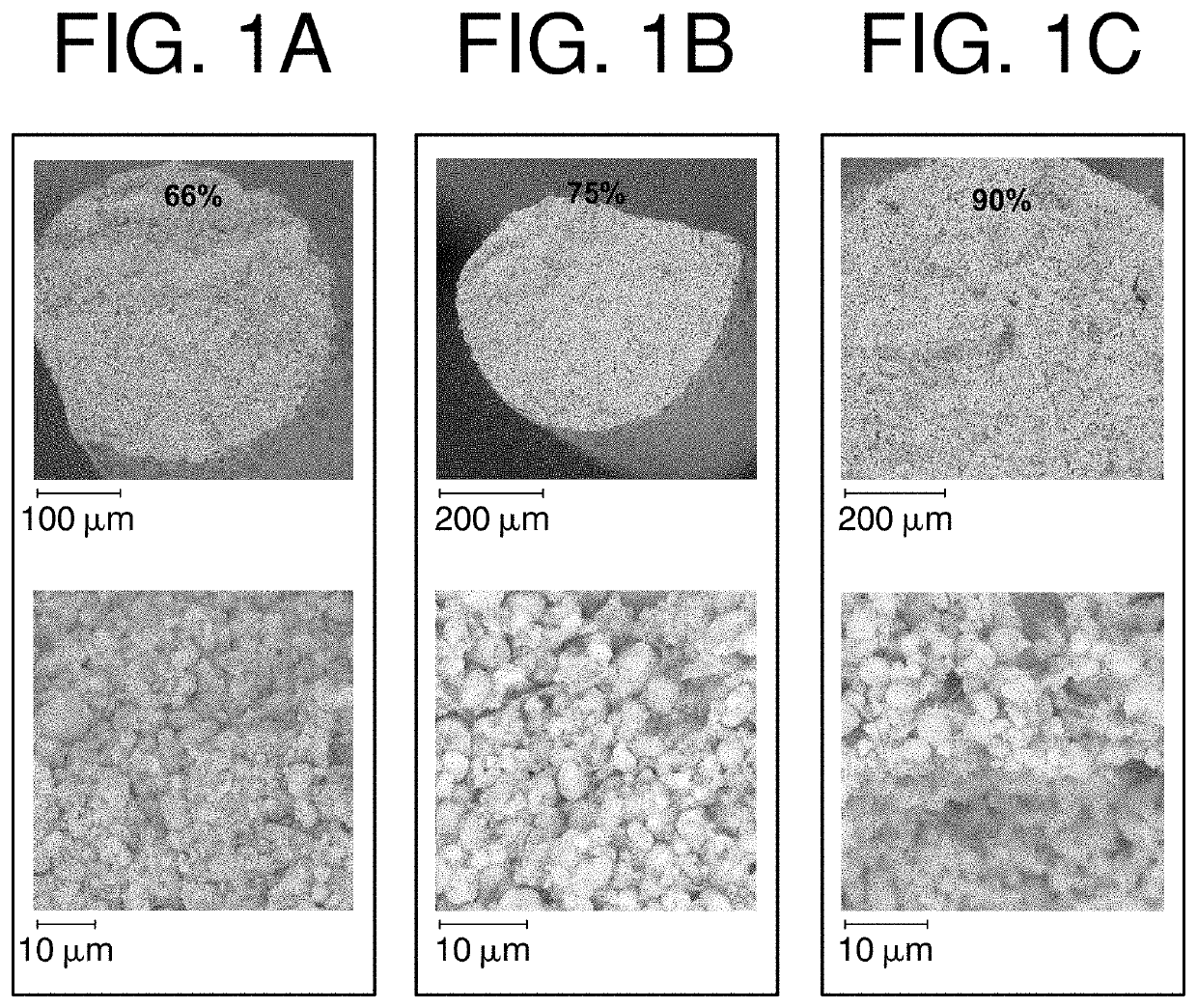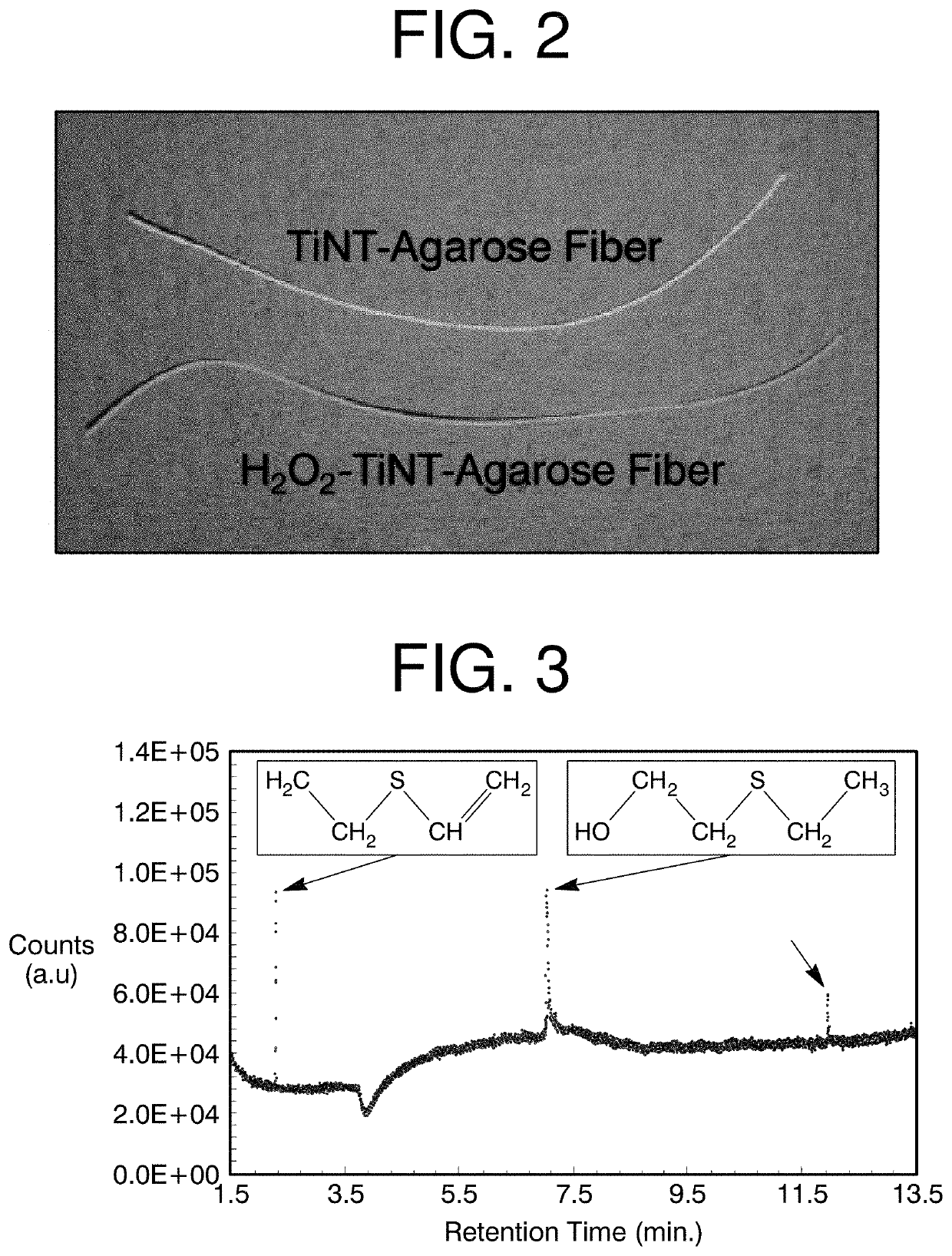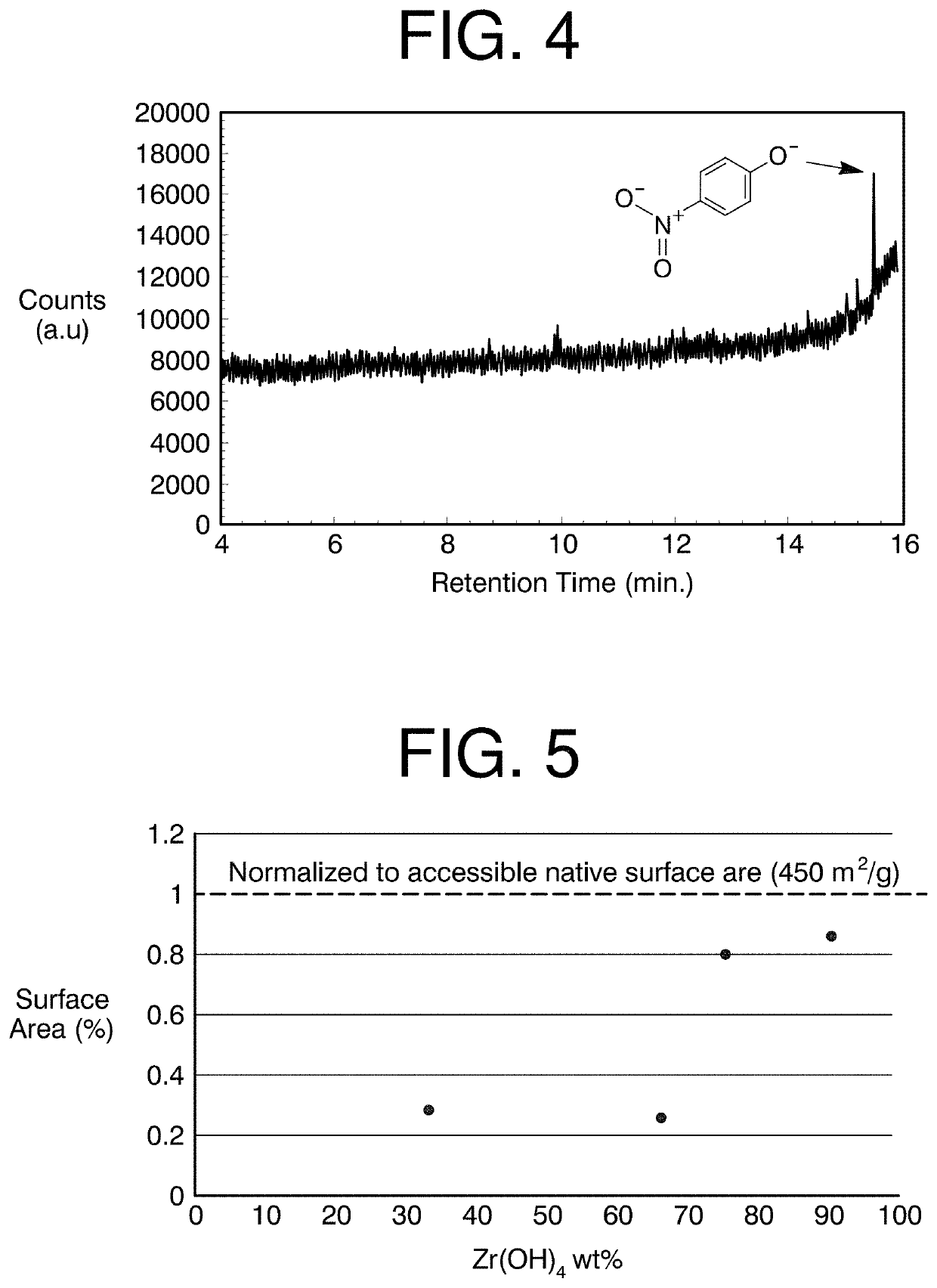Single threaded composite fibers and yarns for the degradation of and protection against toxic chemicals and biological agents
a composite fiber and single-thread technology, applied in the field of fibers, can solve the problems of low catalyst weight loading, high discomfort and thermal burden of the wearer of the protective garment, and high difficulty in breathable garments
- Summary
- Abstract
- Description
- Claims
- Application Information
AI Technical Summary
Benefits of technology
Problems solved by technology
Method used
Image
Examples
example 1
Formation of UiO-66-Amine-Agarose Single Thread Composite Fiber by Wet Spinning Process.
[0048]Powder agarose was added to water and the mixture was heated to between 40-120° C. to form a 2 wt. % agarose solution. Metal organic framework (MOF) UiO-66-amine was dispersed in the solution to form a dispersion. The dispersion was injected into a water bath kept below 40° C. to form the single thread composite fiber. The fiber was extracted from the bath and allowed to air dry.
example 2
Reactivity of Zirconium (IV) (Zr(OH)4)-Agarose Against Various Toxic Agents.
[0049]The reactivity of Zr(OH)4-agarose single thread composite fibers with 90% loading content were demonstrated with 2-chloroethyl ethyl sulfide (2-CEES), a simulant for sulfur mustard and dimethyl 4-nitrophenylphosphate (DMNP), a simulant for organophosphorus nerve agents such as GB and GD.
[0050]FIG. 3 is the gas chromatography / mass spectrometry (GC-MS) results that show the reactivity of the Zr(OH)4-agarose single thread composite fibers dosed with HD mustard simulant, 2-CEES, for 24 hours. GC-MS results show complete degradation of the simulant to non-toxic products HEES and EVS after a period of 24 hours. Products are shown with their peaks in the chromatograph.
[0051]FIG. 4 is the GC-MS results that show the reactivity of the Zr(OH)4-agarose single thread composite fibers dosed with nerve agent simulant DMNP for 24 hours. GC-MS results demonstrate the reactivity by the presence of the hydrolysis produc...
PUM
| Property | Measurement | Unit |
|---|---|---|
| wt. % | aaaaa | aaaaa |
| wt. % | aaaaa | aaaaa |
| wt. % | aaaaa | aaaaa |
Abstract
Description
Claims
Application Information
 Login to View More
Login to View More - R&D
- Intellectual Property
- Life Sciences
- Materials
- Tech Scout
- Unparalleled Data Quality
- Higher Quality Content
- 60% Fewer Hallucinations
Browse by: Latest US Patents, China's latest patents, Technical Efficacy Thesaurus, Application Domain, Technology Topic, Popular Technical Reports.
© 2025 PatSnap. All rights reserved.Legal|Privacy policy|Modern Slavery Act Transparency Statement|Sitemap|About US| Contact US: help@patsnap.com



